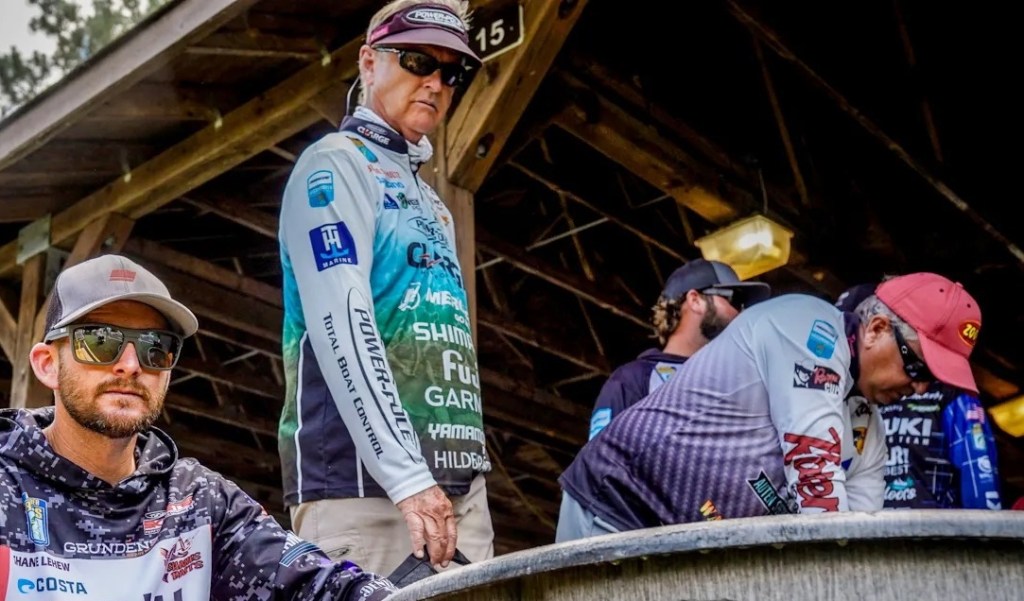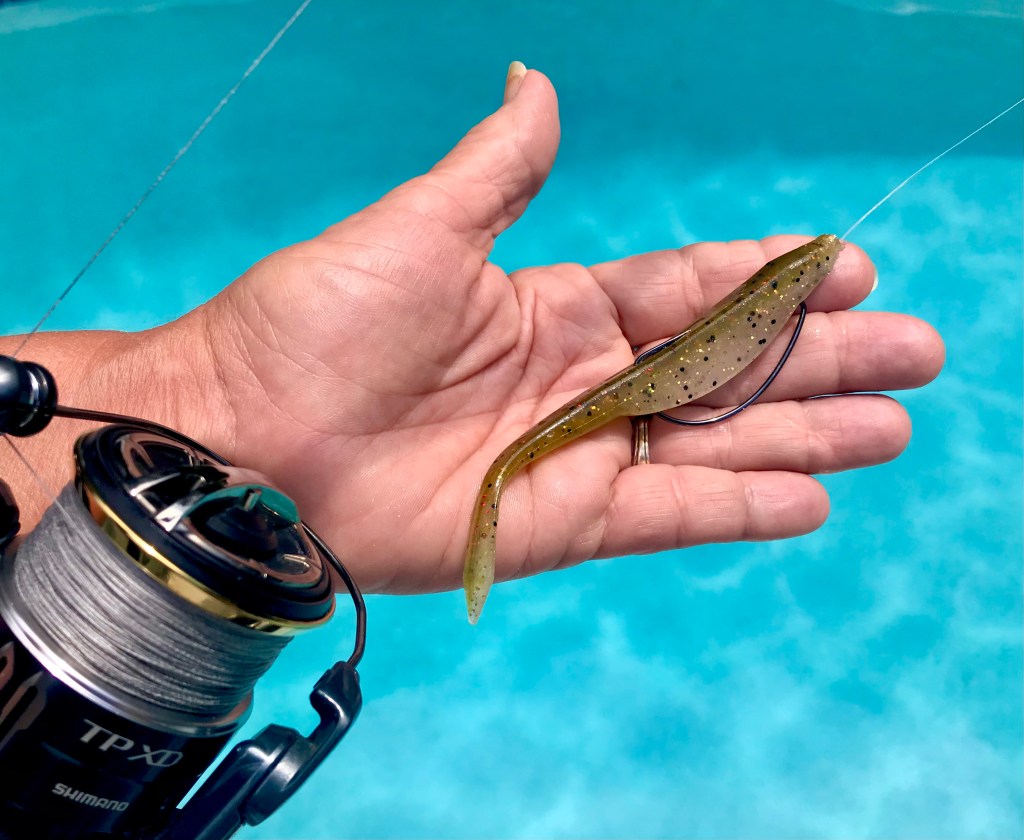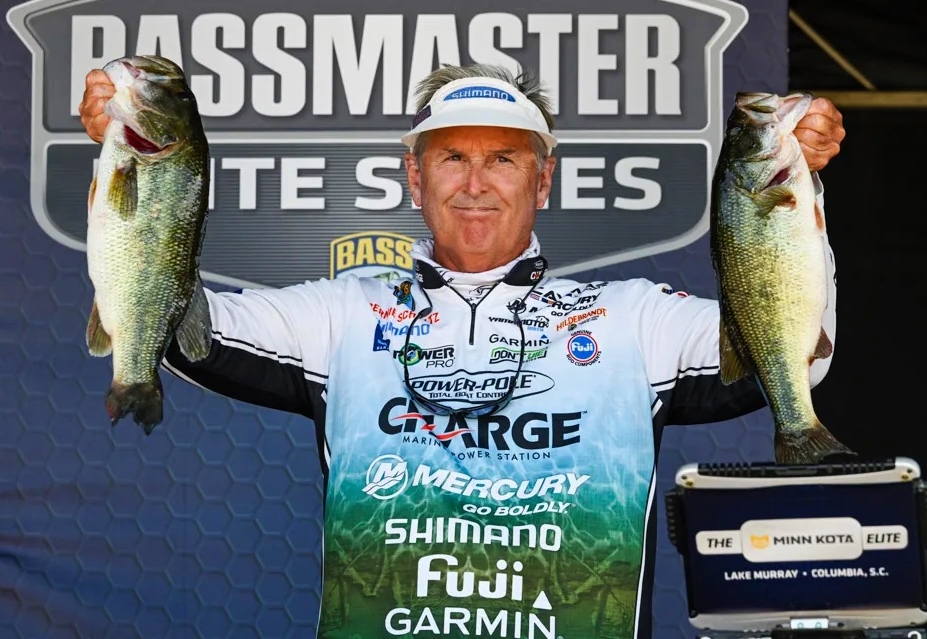
Three weeks ago, the Bassmaster Elite Series visited Lake Murray in South Carolina, and it proved to be one of the best schooling bass tournaments on record.
Carolina native Patrick Walters caught a four-day, 20-fish limit of nearly 100 pounds — most of which came from bass visibly feeding on blueback herring. When you consider this was a postspawn event and the winning weight exceeded last year’s mid-spawn derby, that’s quite a statement.
In addition to the herring bite, the bass were also feeding on schools of threadfin shad. In fact, in some locations, both types of forage were present in abundance.
Mistakes on Murray
When black bass school, they are oftentimes easy to catch. But that wasn’t the case on Lake Murray. The fish there were so focused on the forage, they would hardly look at a lure. And perhaps some of that is due to excessive angling pressure. Murray is essentially an oversized waterpark for the bordering cities of Lexington and Columbia, so the pressure is constant, even during the workweek. Combine that with the high number of visiting, out-of-town anglers and … well, you get the idea.
From the time they are able to chase bait, the fish are literally trained on what they should and should not eat.
Further complicating things; when the bass did school, the feeding frenzies were brief and sporadic at best. If your bait wasn’t presented directly into the melee, chances of hooking up were severely minimized. Not only were response time and accuracy important, so was lure selection.
On Day 1, I struggled — not because of lure choice, accuracy or timing — but more on my overall presentation.
Sure, there were plenty of times when I failed to get a lure to the fish quickly enough, and other times when they were simply out of range. But in retrospect, my biggest problem was in how I worked the lures I chose. The more frantic the bass schooled, the faster I fished, and that proved to be a huge mistake.
My Florida training
In the Sunshine State, our fish sometimes school year round … even in the dead of winter. As a result, I learned to apply a variety of lures and techniques from an early age — everything from topwaters to tandem-rig flukes and everything in between. Part of that training included long distance casting with rapid retrieves.
In nearly every instance I can recall, brisk, erratic retrieves were required to trigger reluctant bass into biting. And that was the approach I took on Murray.

It wasn’t until I shared my frustration with a couple of fellow pros in the weigh-in line that I learned to slow things down, particularly with fluke-style baits. Both Todd Auten and David Gaston suggested I try a slow, steady pull rather than a hyperactive retrieve. Then, at the length of the pull, allow the fluke to fall. Both insisted it would greatly improve my catch rate.
So, on Day 2, I took their advice and changed my approach. And though the results weren’t immediate, the tactic did prove itself.
Shot at redemption
Because I was in the last flight, I knew the better schooling points would already be taken. So rather than compete with the crowd, I opted to try a more obscure spot I found during practice.
After an hour or so of applying the slower approach, I managed to a put a couple of nice fish in the boat. Realizing its effectiveness, I decided to roll the dice and run to my best spot — a place that held the biggest fish I could find in practice, and the very location where I floundered on Day 1.
Upon arrival, I was shocked to find it vacant — the point is that pronounced and popular. Once in place, I dropped the Power-Poles and within minutes a group of fish blew up in casting range.

Poised and ready, I fired the Yamamoto D-Shad into the melee and began a slow, lazy pull with intermittent pauses. As the lure fell on the last pause, my line tightened and I set the hook on my first 4-pounder of the day.
Shortly after, the same scenario played out. An hour later, it happened again. Each time I connected, it seemed the fish got bigger. And by day’s end, I put together a solid, 20-pound bag of Lake Murray largemouth.
Schooling summary
Looking back, I was fortunate in getting a tip from fellow pros Todd Auten and David Gaston. The missed opportunities I experienced on Day 1 turned into caught fish on Day 2, and it was extremely rewarding.
Although it may seem like a simple adjustment, keep in mind the bass schooled sporadically and briefly, in random places on each point. And getting a lure to them quickly enough, at just the right angle, wasn’t easy. Add to that the wrong presentation and you’re looking at a long, nonproductive day.

So the next time you’re confronted with schooling bass, consider slowing your retrieve. Even though the bass might be feeding in a frenzy, the lazy pull and fall of a soft-plastic jerkbait just might trigger the biggest fish in the school.
It did for me.
Follow Bernie Schultz on Instagram, Facebook and through his website.





